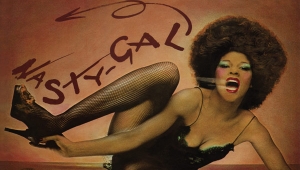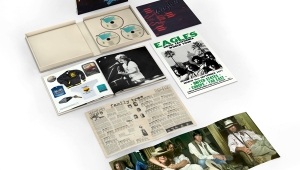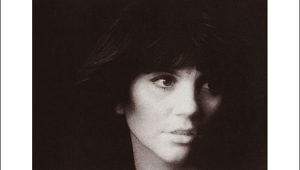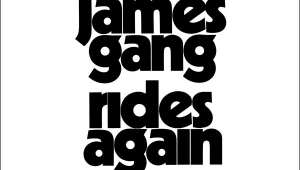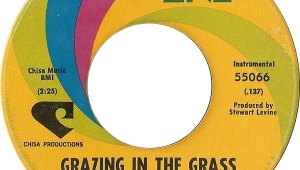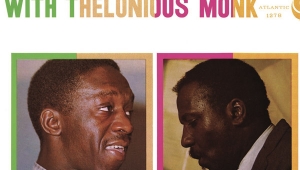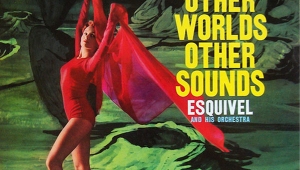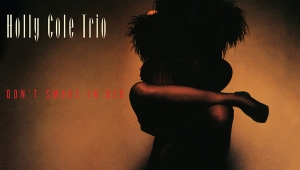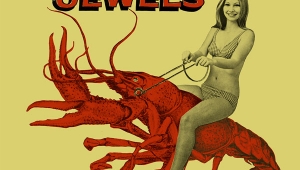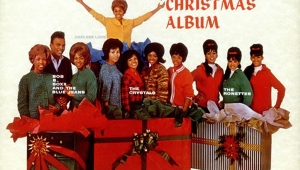| Columns Retired Columns & Blogs |
Sour Honey

It’s not that here aren’t stories to tell either. Let’s take the most famous example: Robert Johnson. The current theory about his death is that he died because the husband of a woman he was hustling got angry and served him whiskey laced with strychnine. Supposedly, it took him three days of wailing agony before he finally died. Now if that ain’t fertile dramatic material I don’t know what is.
There have been good documentaries about Johnson—John Hammond’s 1992 The Search for Robert Johnson is the best—but there’s no worthy dramatic retelling of his short life. Or any other bluesmen, a fact that has always mystified me because you couldn’t ask for a more colorful batch of characters than the delta bluesmen, not to mention the second generation guys like Muddy Waters and Howlin’ Wolf. Hey, if Amadeus could do it for Mozart then why not some kind of epic on Charlie Patton? Robert Johnson? The Wolf? There’s a new Johnson project under development for a 2009 release so perhaps… At this point the best known blues film may be Walter Hill’s Crossroads (1986) which features the A list acting skills of Ralph “The Karate Kid” Macchio and Jami Gertz.
Honeydripper, written and directed by John Sayles, looked on first glance like the real thing, the blues movie that we’d been waiting for. Sayles has had an interesting career, one that’s swung between embarrassments like Men of War with that noted thespian Dolph Lundgren and offbeat gems like Matewan and Lone Star. Here though he swings and misses. BIG TIME!
The plot is skeletal at best. Club owner struggles to save his club against bad white southern sheriff and bad black gangsters. After a promising start that could have said something about the music, in which a Ma Rainey/Alberta Hunter like singer performs to an empty room while an R&B act across the street draws a crowd, the film spirals downward fast.
Halfway in, I began to have a hard time watching this film. It’s so predictable that’s it’s silly. And the whole thing has an odd, old time, feel good, Hollywood gloss to it. In Sayles vision (he’s director and writer), reality is entirely absent. In its place, are lame film stereotypes: Stacy Keach hamming it up as the corrupt, white southern sheriff, Danny Glover (whose performance defines the term “wooden”), as the good hearted, down trodden musician trying to save his club, and Gary Clark Jr. as the shy army veteran who just happens to be a killer electric guitar player and who saves the day when Guitar Sam (a reference, I guess, to Guitar Slim) the club’s featured attraction, doesn’t make the climactic gig. And the set design is ridiculous. Glover’s juke joint looks like a House of Blues, in other words a new building built to look like what those who’ve never seen a juke joint imagine what one looks like. And just like the House of Blues on Sunset Boulevard in LA, this roadhouse doesn’t have a pane of broken glass or a board without some kind of faded paint artfully splashed on it.
Overall, this pandering exercise is a simplistic blues fairy tale that’s too dumb even for those who’ve never heard of the blues. It plays like the kind of movie that could have been made in 1948 rather than 2007. And contrived devices like adding Keb Mo in the role of blind bluesman soothsayer/ghost, which he overplays with a sort of yuck-it-up goofiness, only add to the misery. It’s hugely disappointing that there’s no actual grit to the story, no motivating characters, nothing at stake emotionally, in short Sayles played it down the middle and pulled all his punches. And this from a guy who’s no stranger to clever twisted realities: in Lone Star for example, Chris Cooper had sex with Elizabeth Pena who he later finds out is his sister.
As far as music history and references is concerned, the film is disaster which is not that unexpected although to be fair, this was a fictional tale, one where historical accuracy was a secondary concern. But it seems to me there were some easy, historically correct answers here that Sayles left on the table and that would have added needed flavor to this bland stew. For example, when wonder boy (Clark) takes the stage at the end, he plays a pair of jump blues classics “Blue Light Boogie” (a Louis Jordan song) and “Good Rockin’ Tonight” (of which there are many famous versions pre-Elvis, the best being by the incomparable Wynonie Harris). For accuracies sake, he could have played, “The Things That I Used to Do,” Guitar Slim’s big hit. In another example of, “go for the dramatic choice because no one (ceptin’ music geeks) will know the difference,” Glover talks about playing “Black Bottom Stomp” a prosaic-sounding title for sure, but one that Jelly Roll Morton, a jazz not blues piano player (although you can make arguments in both directions), made a hit out of in the 1920’s.
What’s really offensive about this film is the overly idealized, dishonest and downright ignorant, “Sleepy Time Down South” attitude towards the dialogue and some of the scenes. With its “pale moons” and “crooning tunes,” “Sleepy Time” was for many years, Louis Armstrong’s set opener and a sore point for those who felt it was offensive and ignored the realities of racism in the south. Armstrong took an enormous amount of shit for even including in his sets though I suspect the reason he did it was fairly mundane: he just loved singing it. But this film takes that dreamy unreality to new lows. I mean showing people laughing while picking cotton by hand was where I had to turn away! And then there’s a scene where Glover’s wife forgoes being saved by Jesus so she can stand by her man and cook fried chicken for Keach? This is Disney Does The Blues only worse because it comes from a guy who should know better. Very disappointing and one dimensional. Sayles, I thought you had more talent than this. Damn, this is one bad music film worth missing.
Strangely enough I happen to catch parts of three other music films recently including the great, Be Here To Love Me: A Film About Townes Van Zandt (2005), the wonderful New York Doll (2005) about New York Dolls bassist Arthur “Killer” Kane and the Stones Let’s Spend the Night Together (1983) which I watched being filmed in Tempe, Arizona and which gets frightfully boring after a couple songs.
- Log in or register to post comments


